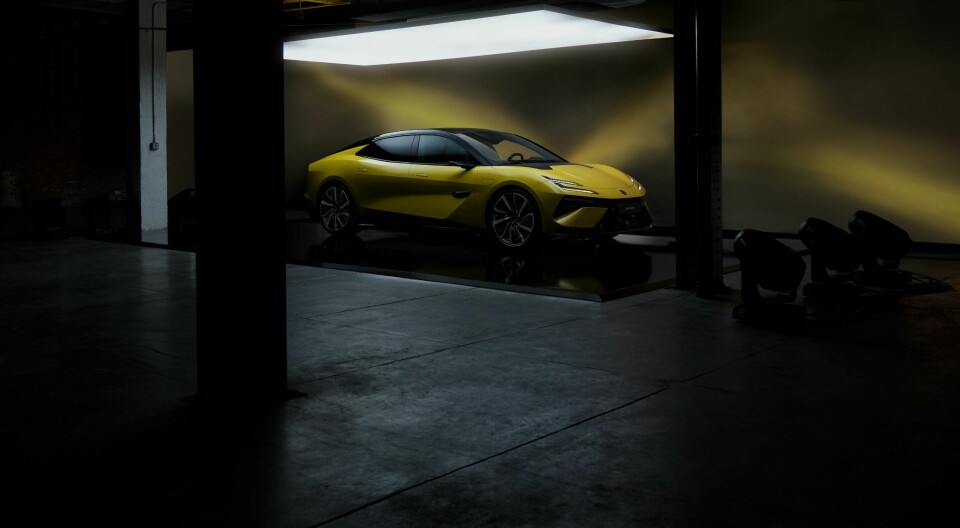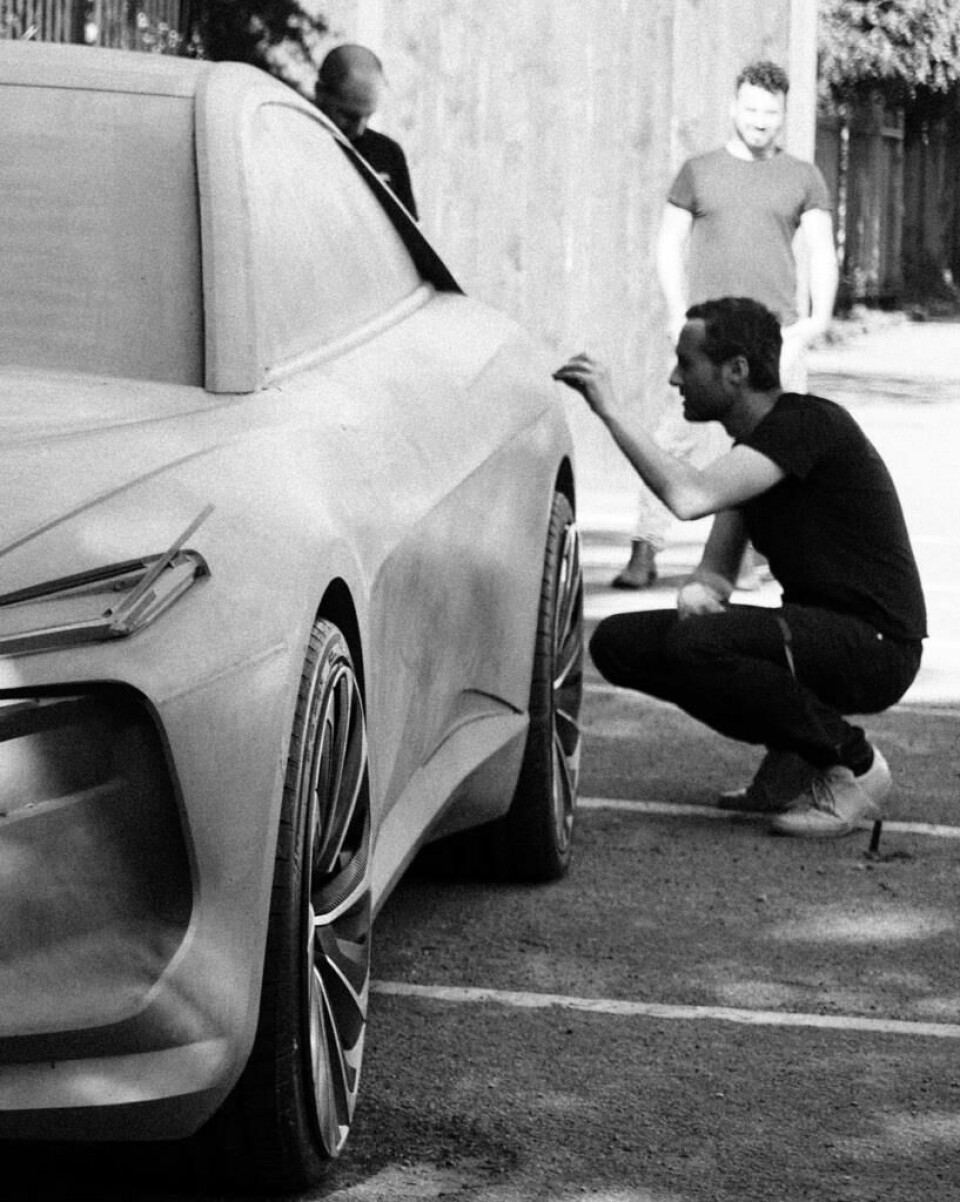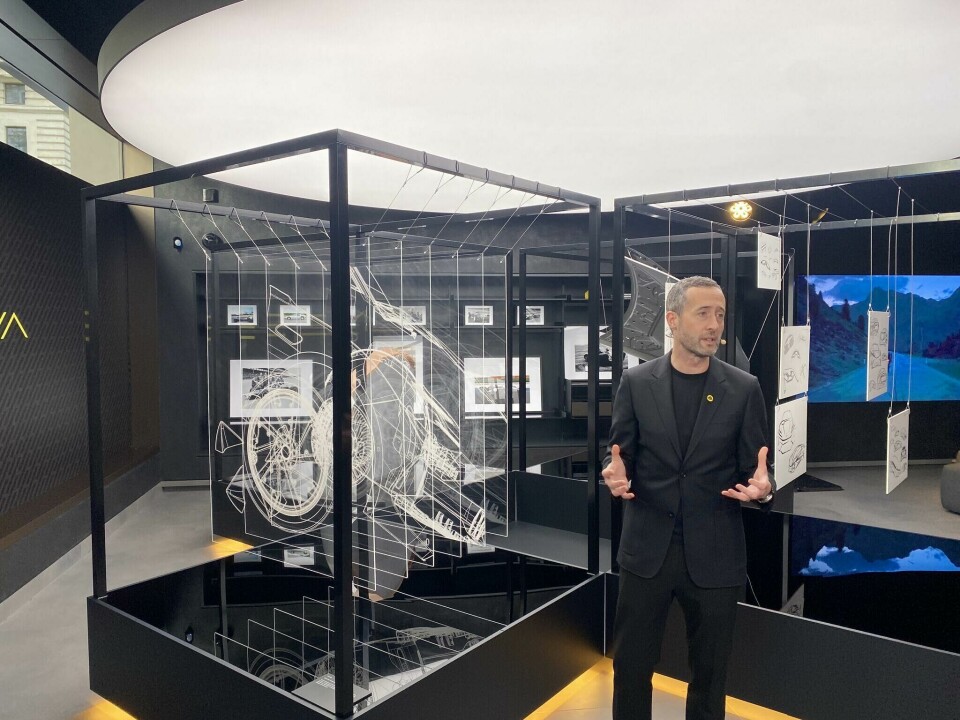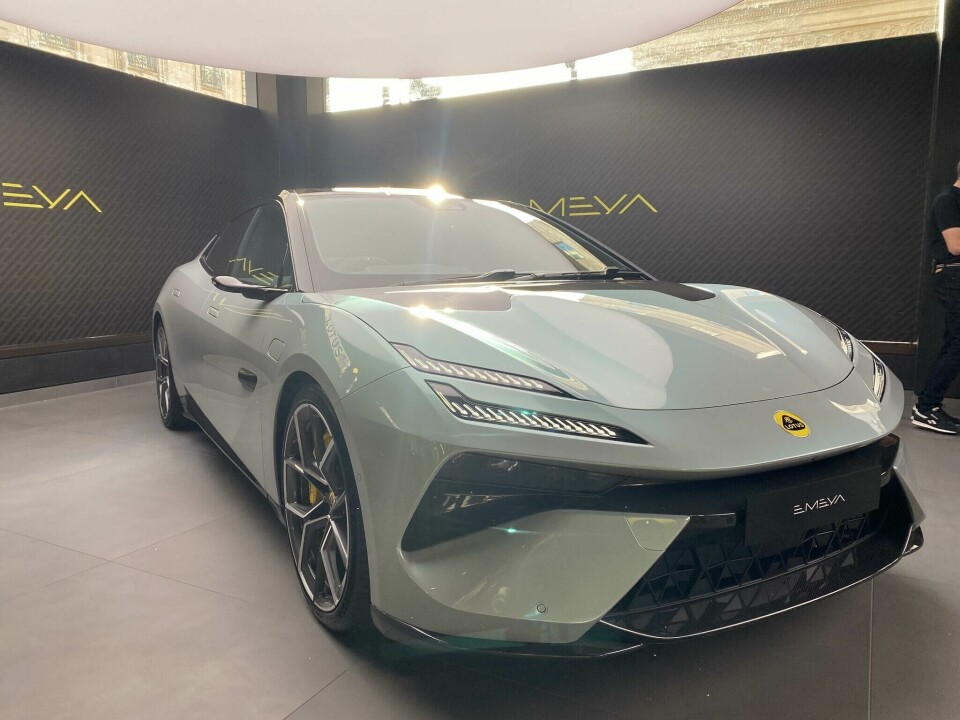
Ben Payne on the new Lotus Emeya
The Lotus Emeya is the brand’s third all-electric model and its first hyper GT. We caught up with VP of design Ben Payne to discuss the vision behind Emeya
The modern Lotus brand is a far cry from its origins in lightweight, compact sports car design but the new era is ushering in its reimagined look with all-electric, performance focused, luxury models. The Emeya is Lotus’ third electric model and its first hyper GT which is heavily influenced by the Evija hypercar whilst making subtle nods to the brand’s heritage throughout.
Lotus’ rebirth is already proving to be a success as what was once a low-volume manufacturer is ramping up production to meet demand and breaking sales records month-on-month. The launch of the Emeya brings the company closer towards its sports car roots, and is likely to continue boosting sales as Lotus redefines itself as an EV manufacturer.
We caught up with recently promoted VP of design Ben Payne at the brand’s Mayfair showroom in London to discuss the vision behind Emeya.
Car Design News: Can you talk us through the evolution from Eletre to Emeya?
Ben Payne: We always saw Emeya as a bridge back towards the sports car. Making a lower and more focused product was quite an easy sell for the design team, we’ve done the really hard job of making Eletre this very upscale, very bold, robust car, probably the most practical Lotus that we’ll ever build. This was a wonderful opportunity to take the same DNA that we stretched from the Evija hypercar for the Eletre to drop the car much lower to the road, bring the roof height down and make this sleek silhouette in a GT.
CDN: What are the similarities and differences between Eletre and Emeya?

BP: The basic building blocks were making sure we’ve got a cab-forward stance and the black out element of the upper canopy; glazing from the beltline upwards to make this graphically separate from the rest of the car which comes from that jet fighter canopy effect on Evija; and this teardrop-shaped glazed bubble. The graphic on the hood stretches that cab-forward nature further forward like Eletre. The one line from the sharp nose section around the car comes from the Esprit and this water line is a very subtle touch point to the past.
In terms of differences, we evolved the DRL signature. All our cars have a nod to aerodynamics and the inspiration for the ‘L’ shape comes from the upturned wingtips that you see on jet planes today. With Eletre, the main DRL is a kind of ‘L’ shape with two elements inside, and on Emeya we shrunk the size of them, made them sharp and technically separated the two elements as an extrapolation of that DNA. At the rear there’s a bit of an evolution from the Eletre having one very simple looping shape that contains all the elements in terms of lighting, aerodynamics and function.
CDN: What about the interior?
As you move into the cabin, we evolved the IP of the car with two very iconic wingtips that come towards each other – but never touch – in the centre of the car, and on this car it’s been expressed in a different way. It’s more of a floating wing form that’s connected and separate from the doors on either side so there’s a familiarity in much of the car but if you look at it in detail it’s actually a different expression.
CDN: Why are the front and rear overhangs imbalanced?
BP: Balance and overhangs for me is part of how you create dynamism in the vehicle. We want the very short front to give you this sort of cab-forward aesthetic. If you look at where the black graphic stops on the hood, it’s right over the wheel centre and if you think about a more traditional GT, you don’t have that at all. In Lotus’ road car history you see that shift when it suddenly went to mid engine and the modern products reflect that, having a slightly longer rear overhang as part of that dynamism in the car.
If it’s completely balanced optically, it tends to look a little bit static so you need to have an imbalance. As much as we put lines through the car that have an attitude or a wedge to them to create this forward thrust to the vehicle, having an imbalance in the overhangs I personally feel is super important. Aerodynamically it’s also quite efficient, so it’s about creating a dynamic aesthetic, but there’s a functional ethos behind it as well.
CDN: What was the vision for the side profile and that line that flows into the rear of the car?
BP: We wanted to make something very clean and simple. The initial design thinking, and it’s still evident, is that the rear screen continues underneath the spoiler and culminates in the tail lamp. It’s one line that goes from that rear laser line of light, right the way up and over the front of the car. The wing does just float over the rear screen, there’s a tiny gap there. In a closed state when the vehicle is off, or it’s not driving at speed, you have this very simple graphic running around the back of the car. It’s one ellipse with all of the features and technology nicely integrated inside that.
CDN: Talk us through the triangular motifs around the car…
BP: It’s an expression of a graphical idea which we can apply in different elements. If you look at the headlamps and rear stop lamps there are patterns buried beneath. The active grille shutters on the front of the car are a series of triangles that come together and make hexagons. They are there for a functional reason because that’s how the mechanism allows it to open and close. Subtly inside of the car there are fragmented patterns that come from triangles like the speaker meshes. The plectrum shape comes from the centre of the Lotus logo so it’s a very subtle nod to it without putting the logo everywhere. We want to do things that have got levels of detail to them, I think that’s part of how you build a luxury brand: there’s a lot more to it than that at first glance.

CDN: How did aerodynamics play into the development process?
BP: Dealing with the aerodynamics team is an international business. We’ve got people based in the UK, we’ve got further expertise in Germany, and also a large team in terms of R&D in China. In terms of digital capability and vehicle intelligence, the leading point in the market is very much in the eastern hemisphere at the minute, it’s driven by China, so we leverage a lot of our really advanced digital capability there. Whereas in terms of aerodynamics and vehicle dynamics, it’s much more European focused, so it’s the UK and Germany.

CDN: More to it than just fine tuning in a wind tunnel, then. What about the car itself?
BP: There is a series of ducts around the vehicle, some subtle and others more overt. At the rear, the extraction ducts come from the venturi tunnels in the back of the Evija hypercar. For a car in this category to have direct line of sight to the tyre through these great big ducts is super impressive. The active grille shutter has a series of petals with an intelligent system on the car to open it up to allow air onto the radiator pack to cool the product.
When you don’t need it, it closes off which is more aerodynamically efficient and pushes air to the side and out underneath the bodywork. Quite unusual for a car in this category, we’ve got an active air dam at the back of the splitter. This will automatically drop down to close off the gap between car and road to increase efficiency. The idea behind that comes from Formula One technology; in the ‘70s Colin Chapman was pioneering around that to pull the car down against the road and increase its performance. We’re taking that ideology and bringing it to life on mass produced EVs.



















